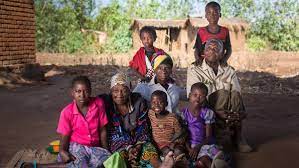(415) 300-0180

In the remote mountains of Peru, Rosa used to walk six hours to collect funds sent by family in Lima. Today, she simply checks her phone, confirms the transfer, and buys supplies for her store using her digital wallet. This shift marks a revolution in financial inclusion—one that brings technology, trust, and community together to reach the last mile of global giving.
Rosa’s story is a testament to the impact of digital access. Before financial inclusion tools reached her community, she faced long, costly journeys to access her funds. Each trip took an entire day and came with a 12% transaction fee, not to mention the constant risk of carrying cash on rugged mountain roads.
With her digital wallet, Rosa now receives instant transfers at a fraction of the cost, boosting her small store’s capacity and even allowing her to hire three local employees. With newfound access to microloans, she’s doubled her inventory, sent her children to school, opened a savings account, and become a mentor for others navigating the digital shift.
In rural Uganda, Emmanuel struggled to grow his farm without access to credit. Traditional banks were out of reach—both physically and financially. But with a mobile money account and digital payments, Emmanuel could secure credit, track inventory, connect with markets, and build his financial history. This support has led to a 300% yield increase, new export contracts, and five jobs created in his village. Digital tools have empowered him to adopt technology on his farm and become financially literate, setting a precedent for agricultural transformation in his community.
Maria, a shop owner in rural Colombia, illustrates the gradual journey from cash reliance to digital empowerment. In her first week with a digital wallet, Maria learned the basics of mobile payments and gained confidence through family support. Within a month, she was paying bills, saving, and sharing her knowledge with others in her village. By month three, she’d expanded her business, started using digital invoicing, and opened access to online suppliers—all crucial steps in her path to financial security and growth.
Take Mkamba Village in Tanzania, where digital adoption has become widespread. With 80% of residents now using mobile money, the local economy has seen a 200% increase in trade, 45 new businesses, and a 30% rise in savings. The village holds weekly workshops and peer support groups that have driven digital literacy, increased youth employment, and empowered women to take part in the local economy.
Digital access has radically altered life in isolated communities. Where days of travel once cost both time and income, mobile technology now brings services directly to these communities. Remote training, online support, and community hubs make financial inclusion accessible, secure, and manageable, even for those with limited formal education.
Innovative approaches to financial education, like peer learning and game-based digital tools, help make financial literacy practical and relevant to everyday life. Community groups, success stories, and hands-on exercises build confidence and skills while honoring cultural contexts and languages.
For Ana, a textile artisan in Bolivia, the journey to digital inclusion began with a single smartphone. Within months, she had expanded her business online, began accepting digital payments, and hired employees. One year later, Ana is not only a thriving entrepreneur but also a community leader and digital mentor. She now trains others in her village, sharing her experience as a digital champion and financial educator.
Sustaining impact in these communities relies on local leadership, gradual learning, and economic integration. By focusing on community ownership, step-by-step progress, and creating market connections, projects like Rosa’s and Emmanuel’s help foster self-sufficiency and resilience.
The success of financial inclusion initiatives at the last mile depends on starting simple, building trust, and scaling gradually. Small wins, like basic transactions, give people confidence. Transparent processes and community support ensure that digital tools are used effectively and embraced fully. Scaling up from these proven models allows for sustainable growth tailored to each community’s needs.
Financial inclusion is moving beyond basic access to include services like credit scoring, insurance, and investment options. Programs now support leadership development, business incubation, skills training, and resource-sharing networks that deepen the impact of financial tools, empowering communities in lasting ways.
Financial inclusion isn’t just about access to services—it’s about transforming lives, building community resilience, and opening doors to sustainable opportunities. Through stories like Rosa’s, Emmanuel’s, and Maria’s, we see how reaching the last mile of giving creates ripples of change that empower individuals and uplift entire communities.
Ready to be part of the inclusion revolution? Join us in bringing financial access to the last mile of global giving.

Christopher Robison is a San Francisco-based software engineer and tech innovator with 25+ years in the industry. Specializing in blockchain, AI, and robotics, he’s built custom 3D printers, led tech transformations, and created impactful digital solutions for biotech, finance, and beyond. Outside of work, he’s a punk rock karaoke regular, golf enthusiast, and a tinkerer who’s always building something new alongside his cat Otis and dog Yuki.